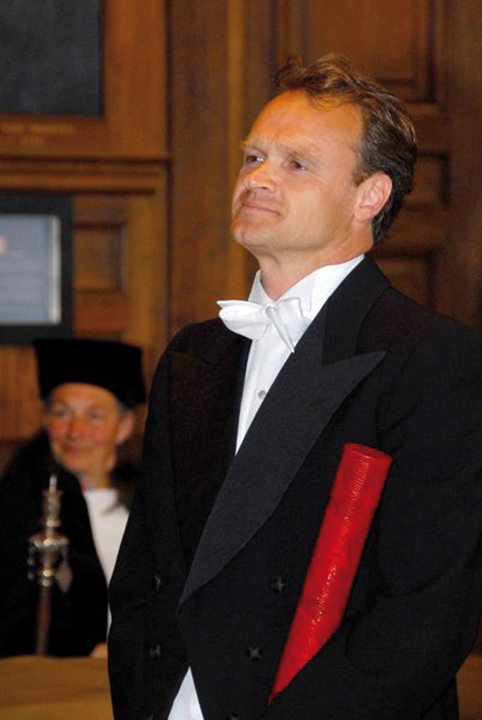The European Academy of Rehabilitation Medicine has created an annual prize: The Prize of European Academy of Rehabilitation Medicine.
This is funded by the Journal of Rehabilitation Medicine and the non-profit Foundation for Rehabilitation Information (Sweden).
The prize is 1200 Euros plus up to 450 Euros for registration, travelling and accommodation at the occasion when the prize is presented.
A submission should be on a rehabilitation, physical medicine or medico-social topic relating to the (re-)integration of persons with disabilities It should be the work of a doctor or health professional employed in a Physical and Rehabilitation Department of a country which has an official delegate in the Physical and Rehabilitation Medicine Section of European Union of Medical Specialists.(www.euro-prm.org). The work should be written in one of the two official languages of the Academy (English or French). A summary of the work should be presented in the other official language .It should be typed or printed and may be a finished work or set of works that is part of a thesis or consist of at least one publication in a peer-reviewed journal. Candidates should submit their work at the latest by 31 July of the year in question to all members of the Prize Committee (see www.aemr.eu) It should be accompanied by a signed letter in one of the two languages, asking for the enclosed submission to be considered for the prize, and countersigned by the head of the department A copy (with the letter )should be sent to each member of the prize committee(see below and see website of Academy for full addresses ).
The prize will be awarded at a major scientific meeting. All candidates will be informed of the result of the competition. The decision of the Prize Commission is final. The announcement of the prize will be sent each year to the national societies of PRM, and to rehabilitation journals. It will also be on the Academy website. The successful candidate will be asked to send a photo to the secretary. If only one submission is sent in then the jury may decide to postpone the award to the next year.
Further information can be found at the Academy website www.aemr.eu
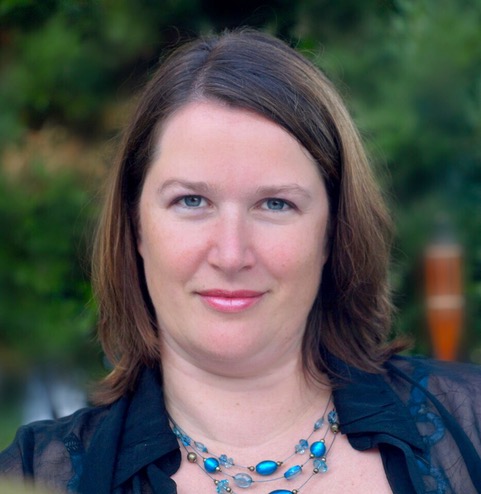
Katja Groleger Sršen received the European Academy of Rehabilitation Medicine Award for her doctoral thesis: Evaluation of processes of care in a rehabilitation program for children with disability and evaluation of some impact factors at the Medical Faculty, University of Ljubljana, Slovenia. Promotor: Professor Anton Zupan, Co-Promotor: Professor Gaj Vidmar. Chair of the Doctoral thesis committee: Professor. Helena Burger. The award was given to her during the congress of European Congress of Physical and Rehabilitation Medicine in Vilnius, Lithuania, May 3, 2018.
Original contribution to scientific knowledge:
A thorough knowledge of processes of care and their subsequent improvement is one of the possible strategies to reduce the psychosocial problems of parents of chronically ill children. Hence, we wanted to assess the influence of demographic factors, the health status of the chronically ill children and the characteristics of the different programs of (re)habilitation on the assessment of processes of care provided by the parents (using the Measure of Process of Care, MPOC-20, questionnaire). We were particularly interested in the possible impact of the presence of a key worker.
Firstly, we have checked the sensitivity, internal consistency and stability in time of the Slovenian translation of the MPOC-20 and MPOC-SP. Then we invited parents whose children had been referred to 8 Slovene health institutions (two at tertiary level,8, and 6 at secondary level of health care) during the period from 1st January 2011 to 31st December 2011. We also invited the care providers from the same 8 institutions. Parents (care providers) filled in MPOC20 (MPOCSP). Parents also answered the question on how the processes of care reduced their stress and filled in the Client Satisfaction Questionnaire (CSQ-8). They were also asked to fill in the questionnaire on demographic data, health status and treatment programs and rehabilitation of their chronically ill child. Data collection was followed by statistical analysis (univariate analysis, regression models, Confirmatory Factor Analysis and Structural Regression Model).
Parents of 235 children (80% were mothers) and 67 care providers participated in the study. The parents reported high overall satisfaction with the processes of care. They were the least satisfied with the provision of general information and specific information about the child. Results were in excellent agreement with previous study results (referring to means scores and ranking order of MPOC-20 subscales). Less than half of parents reported the availability of key person (a person who guides the family within the healthcare system; helps to coordinate the healthcare; enabling parents via offering support, information and resources, based on their needs). We found the availability of the key worker in the healthcare system to be positively associated with higher scores on all MPOC-20 scales (confirmed by univariate analyses and the regression model). We also found positive influence of child’s male sex on Providing general information Subscale scores (univariate analysis and regression model). Longer involvement in the treatment was statistically significantly associated with lower scores in Enabling partnership (EP), Coordinated and Comprehensive Care for Child and Family (CCC) and Respectful and Supportive Care subscales (structural regression model). Parents whose children visit a PRM specialist assessed the Enabling and Partnership scale, in average, higher (suggesting that rehabilitation supports the active involvement of parents with the entire rehabilitation team of various experts or therapists). Based on structural regression model we decided to transfer Item 5 from the CCC to the EP scale. The proportion of the clarified variance was from 7% to 22%. Results confirmed also the sensitivity, internal consistency and stability in time of the Slovenian translation of the MPOC-20 and MPOC-SP.
The project was co-financed by the Slovenian Research Agency (project L3-3649).
List of original publications
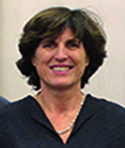
Summary of the thesis Mental Practice through motor imagery in gait rehabilitation following acquired brain injury. This thesis was awarded the European Academy of Rehabilitation Medicine prize 2016. Dr Oostra received her prize during the congress of Baltic and North Sea Forum on PRM in Maastricht, The Netherlands, October 2017.
Mental practice (MP) using motor imagery (MI) is considered to be a promising rehabilitation technique in patients following acquired brain injury. During MP a motor task is repeatedly mentally rehearsed without any overt movement. Since MI and overt movement share many common behavioural characteristics and activate common neural pathways, mental practice using motor imagery can potentially be used to prevent learned non-use and maladaptive cortical reorganization. The first objective of this research was to examine if MI ability is preserved in patients with an acquired brain injury. We found that patients with a traumatic brain injury showed an impaired MI ability with imagined movements being performed slower and less accurate than executed movements. In our stroke cohort on the other hand, MI vividness was shown to be reduced, but we demonstrated a preserved temporal coupling between real and imagined movements. Our second study aim was to examine if MI ability can be trained. MI is a skill and like any skill, we expect that it can be rehearsed and thus brought to a higher level of performance. Therefore, we examined MI ability in patients with a first-ever stroke and included these patients in a 6 weeks MI training program. MI vividness responded well to MI training with a normalization of kinesthetic motor imagery vividness scores after training. This finding highlights the need to familiarize patients with the mental practice technique before applying it in rehabilitation practice. Recovering independent gait is considered one of the most important rehabilitation goals by stroke patients and given its clinical importance, developing rehabilitation techniques that help gait recovery seem highly relevant. Therefore our third study objective was to examine the effect of a gait rehabilitation program based on mental practice. Our study results support the evidence that MP has an additional benefit in gait rehabilitation post stroke. Moreover, we did not find a relationship between initial low MI ability and gait velocity improvement after MP, indicating that people with initial low MI ability scores can equally benefit from MP. Finally our fourth study aim was to clarify if MI ability after stroke is related to a specific brain lesion localization. Voxel-lesion symptom mapping results identified the importance of an intact functional fronto-parietal network for a preserved MI ability. We further elucidated the crucial role of the basal ganglia, more specifically the left putamen, when performing motor imagery tasks. In conclusion, this work has aimed to further clarify MI ability in patients with an acquired brain injury. Results have revealed that both patients with stroke and a traumatic brain injury have an (at least) partially preserved MI ability and are potential candidates for MP in neurorehabilitation. Moreover MP was shown to have an additional task specific benefit in gait rehabilitation in a sub-acute phase after stroke. Finally voxel lesion-symptom mapping indicated a left hemisphere dominance for MI, emphasizing the importance of the need for an intact fronto-parietal network and subcortical structures for preserved MI ability. Dr Kristine Oostra work at the Ghent University, Ghent, Belgium. Promotor: Prof. Dr. G. Vingerhoets. Co- promotor: Prof. Dr. G. Vanderstraeten. E-mail: kristine.oostra@uzgent.be.
References
Oostra KM, Vereecke A, Jones K, Vanderstraeten G, Vingerhoets G. Motor imagery ability in patients with traumatic brain injury. Arch Phys Med Rehabil 2012;93: 828–833.
Oostra KM, Oomen A, Vanderstraeten G, Vingerhoets G. Influence of motor imagery training on gait rehabilitation in sub-acute stroke: a randomized controlled trial. J Rehab Med 2015; 47: 204–209.
Oostra KM, Van Bladel A, Vanhoonacker A, Vingerhoets G. Neural correlates of motor imagery ability after stroke: a voxel-based lesion-symptom mapping study. Front Behav Neurosci 03/2016. Doi: 10.3389/fnbeh.2016.00005.
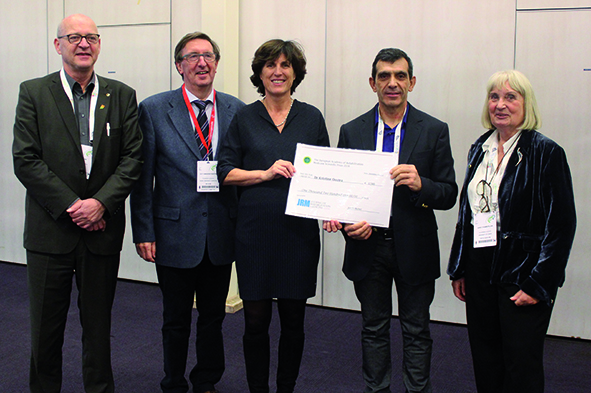

Summary of the thesis Balance and gait in neurodegenerative disease: what startles tells us about motor control. This thesis was awarded the European Academy of Rehabilitation Medicine prize 2015. Dr Nonneke received his prize during the congress of Baltic and North Sea Forum in Maastrict, November 2017.
Jorik Nonnekes studied balance and gait in three different groups: healthy subjects, people with hereditary spastic paraplegia (HSP), and people with Parkinson’s disease. Studies in healthy subjects were essential to investigate unaffected control of balance and gait. Studies in HSP and Parkinson’s disease were performed to study balance and gait in two different neurodegenerative disorders that both develop slowly, but that affect different neural structures. In HSP, the corticospinal (pyramidal) tract is affected bilaterally. HSP is therefore termed a pyramidal disease. In contrast, Parkinson’s disease is a typical example of an extrapyramidal disease. In particular, the thesis focuses on the role of the brainstem reticular formation in impaired motor control. An important method that was used to study the brainstem reticular formation was the startle reflex and the StartReact paradigm, in which reaction times can be accelerated by a startling stimulus. The results of the performed studies suggest that dysfunction of the reticular formation likely contributes to gait deficits in extrapyramidal neurodegenerative diseases, but that the reticular formaton plays a compensatory role in gait and balance impairments in patients with pyramidal diseases.
Last but not least, Jorik Nonnekes presents a treatment algorithm for freezing of gait, a gait disorder that is frequently seen in Parkinson’s disease. In his treatment algorithm, which is published in the Lancet Neurology, Jorik highlights the important role of combined pharmaceutical and non-pharmaceutical treatment strategies in the management of freezing of gait.
Jorik Nonnekes obtained his PhD degree (cum laude) on September 2 2015. Currently, he works as a resident in rehabilitation medicine. In addition, he continues his research on gait and balance impairments by working one day a week as a postdoctoral researcher.
References
Nonnekes J, Carpenter MG, Inglis JT, Duysens J, Weerdesteyn V. What startles tell us about control of posture and gait. Neuroscience and biobehavioral reviews 2015;53:131-8.
Nonnekes J, Scotti A, Oude Nijhuis LB, Smulders K, Queralt A, Geurts AC, Bloem BR, Weerdesteyn V. Are postural responses to backward and forward perturbations processed by different neural circuits? Neuroscience 2013;245:109-20.
Nonnekes J, Arrogi A, Munneke MA, van Asseldonk EH, Oude Nijhuis LB, Geurts AC, Weerdesteyn V. Subcortical structures in humans can be facilitated by transcranial direct current stimulation. PloS one 2014;9:e107731.
Nonnekes J, de Kam D, Oude Nijhuis LB, van Geel K, Bloem BR, Geurts A, Weerdesteyn V. StartReact effects support different pathophysiological mechanisms underlying freezing of gait and postural instability in Parkinson's disease. PloS one 2015;10:e0122064.
Nonnekes J, Geurts AC, Nijhuis LB, van Geel K, Snijders AH, Bloem BR, Weerdesteyn V. Reduced StartReact effect and freezing of gait in Parkinson's disease: two of a kind? Journal of neurology 2014;261:943-50.
Nonnekes J, de Niet M, Oude Nijhuis LB, de Bot ST, van de Warrenburg BP, Bloem BR, Geurts AC, Weerdesteyn V. Mechanisms of postural instability in hereditary spastic paraplegia. Journal of neurology 2013;260:2387-95.
Nonnekes J, Oude Nijhuis LB, de Niet M, de Bot ST, Pasman JW, van de Warrenburg BP, Bloem BR, Weerdesteyn V, Geurts AC. StartReact restores reaction time in HSP: evidence for subcortical release of a motor program. The Journal of neuroscience : the official journal of the Society for Neuroscience 2014;34:275-81.
Nonnekes J, Snijders AH, Nutt JG, Deuschl G, Giladi N, Bloem BR. Freezing of gait: a practical approach to management. The Lancet Neurology 2015;14:768-78.
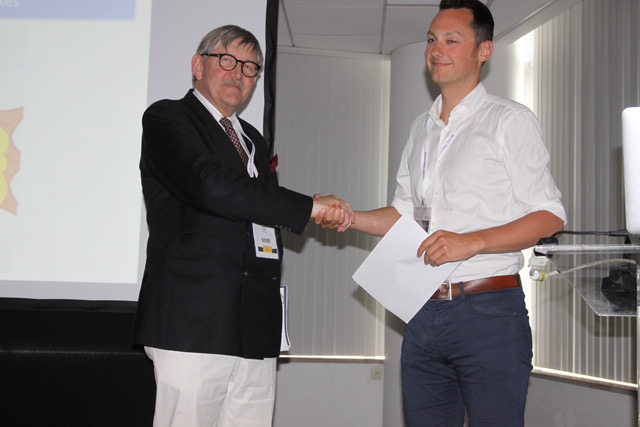

Summary of the thesis: home-based Computer Assisted Arm Rehabilitation (hCAAR) device for upper limb exercises in stroke. This thesis was awarded the European Academy of Rehabilitation Medicine prize 2014. Dr Sivan received his prize during the congress of Baltic and North Sea Forum on PRM in Riga, September 2015.
Home-based robotic technologies may offer the possibility of self-directed upper limb exercise after stroke as a means of increasing the intensity of rehabilitation therapy. The current literature has a paucity of robotic devices that have been tested in a home environment. The aim of this research project was to develop and evaluate a robotic device (hCAAR) that can be used independently at home by stroke survivors with upper limb weakness. The project had two stages: Stage 1, hCAAR development using a user-centred design process; Stage 2, a feasibility clinical study in the home setting.
Stage 1: Nine stroke survivors with upper limb weakness and 6 healthcare professionals were involved in the concept and design stages of device development. hCAAR consists of a powered joystick with a computer interface, which is used to direct the movement of the upper limb to perform therapeutic movements as directed by tasks on the screen. hCAAR also provides controlled assistance when the user’s voluntary upper limb movement is insufficient to complete the prescribed task. Stage 2: In the feasibility study, 19 participants (stroke survivors with upper limb weakness) were recruited. Clinical outcomes performed at baseline (A0), at end of 8-weeks of hCAAR use (A1) and one month after end of hCAAR use (A2) were: Optotrak kinematic variables, Fugl Meyer Upper Extremity motor subscale (FM-UE), Action Research Arm Test (ARAT), Medical Research Council (MRC) muscle strength scale and Modified Ashworth Scale (MAS), Chedoke Arm and Hand Activity Inventory (CAHAI), ABILHAND and participant/carer/therapist qualitative feedback.
No serious adverse events were reported. Two participants were unable to use hCAAR: one due to severe paresis (FM 6/66); and the other due to personal problems. The remaining 17 participants were able to use the device independently in their home setting. The median usage time was 433 min (IQR 250–791 min). A statistically significant improvement was observed in the kinematic and clinical outcomes at A1. The median gain in the scores at A1 were by: movement time 19%, path length 15% and jerk 19%, FM-UE 1 point, total MAS 1.5 point, total MRC 2 points, ARAT 3 points, CAHAI 5.5 points and ABILHAND 3 points. Three participants showed clinically significant improvement in all the clinical outcomes. Five participants reported improvement in functional ability in daily activities. Participants, family members and therapists were satisfied with the usability of hCAAR in the home setting. The research project also demonstrated that the Comprehensive International Classification of Functioning, Disability and Health (ICF) Core Set for stroke provides a useful basis to structure interviews to gather feedback from end-users and healthcare professionals in different stages (concept, design and testing) of the rehabilitation device development.
In conclusion, a home-based restorative rehabilitation robotic device has been developed using a user-centred design process that involved stroke survivors and healthcare professionals. The hCAAR feasibility study is the first clinical study of its kind reported in the current literature; in this study, 17 participants used the robotic device independently for 8 weeks in their own homes with minimal supervision from healthcare professionals. Statistically significant improvements were observed in the kinematic and clinical outcomes in the study.
Dr Manoj Sivan, MD, works as a Consultant in Rehabilitation Medicine, Salford Royal Hospital and Honorary Senior Lecturer, University of Manchester. E-mail: Manoj.Sivan@manchester.ac.uk.
References
1. Sivan M, Gallagher J, Makower S, Keeling D, Bhakta B, O’Connor RJ, Levesley M. Home-based Computer Assisted Arm Rehabilitation (hCAAR) robotic device for upper limb exercise after stroke: results of a feasibility study in home setting. J Neuroeng Rehabil 2014; 11: 163.
2. Sivan M, Gallagher J, Holt R, Weightman A, Levesley M, Bhakta B. Investigating the International Classification of Functioning, Disability and Health (ICF) framework to capture user needs in the concept stage of rehabilitation technology development for stroke patients. Assist Technol 2014; 26: 164–173.
3. Sivan M, O’Connor RJ, Makower S, Levesley M, Bhakta B. Systematic review of outcome measures used in the evaluation of robot-assisted upper limb exercise in stroke. J Rehabil Med 2011; 43: 181–189.

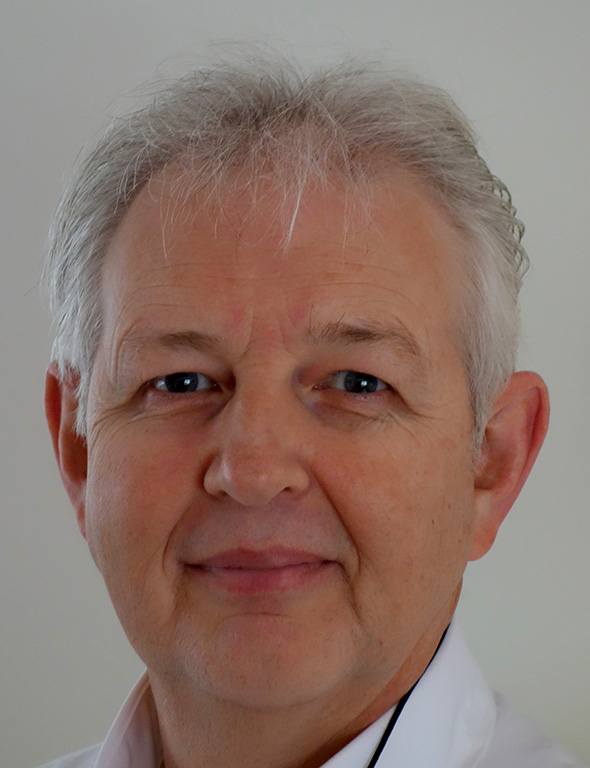
Summary of the thesis: Pain and disabilities related to hip disorders in adults with severe cerebral palsy. This thesis was awarded with the European Academy of Rehabilitation Medicine prize 2013. Dr Boldingh received his prize during the ESPRM congress in Marseille, France, 2014.
Research considered the question: Are patients with cerebral palsy (CP) and hip disorders bothered by this disorder, in their youth, adolescence or later? And if so, how can we help these people by preventing or curing this problem?
First part of the thesis is on the development of an instrument to measure pain in patients with severe cerebral palsy. The pain assessment instrument (PAICP) uses drawings of everyday situations. Patients score pain on a faces pain scale (1).
Secondly, a cross-sectional study was carried out to investigate the relationship between hip X-ray findings (migration, deformity and osteoarthritis) and pain in 160 patients with severe CP (2).
We conclude that there is a high prevalence of hip pain after unsuccessful femoral bone surgery in patients with severe CP. Migration and deformity of the femoral head are closely inter-related, and are associated with pain (2). Patients frequently need a special molded chair and suffer from adduction contractures of the hip (3).
Third part is a systematic review of the literature about preventive, curative and palliative surgery in hip disorders in patients with severe cerebral palsy (4, 5).
Last part is the design of a decision tree for the surveillance and intervention of hip disorders in spastic CP. The algorithm is based on our research and on the literature assessed in our reviews.
Dr Eric Boldingh (1951) is working as a physiatrist for multiple impaired children in the Hague, the Netherlands. His current research is aimed at establishing a CP registration system in the Netherlands. E-mail: e.boldingh@casema.nl.
References
Boldingh EJ, et al. Assessing pain in patients with severe cerebral palsy: development, reliability, and validity of a pain assessment instrument for cerebral palsy. Arch Phys Med Rehabil 2004; 85: 758–766.
Boldingh EJ, et al. Determinants of hip pain in adult patients with severe cerebral palsy. J Pediatr Orthop B 2005; 14: 120–125
Boldingh EJ, et al. Radiographic hip disorders and associated complications in severe cerebral palsy. J Pediatr Orthop B 2007; 16: 31–34.
Boldingh EJ, et al. Palliative hip surgery in severe cerebral palsy: a systematic review. J Pediatr Orthop B 2014; 23: 86–92.
Bouwhuis CB, el al. Effectiveness of preventive and corrective surgical intervention on hip disorders in severe cerebral palsy: a systematic review. Disabil Rehabil 2014 Apr 14 [Epub ahead of print].
Shore BJ, et al. Adductor surgery to prevent hip displacement in children with cerebral palsy: the predictive role of the Gross Motor Function Classification System. J Bone Joint Surg Am 2012; 94: 326–334.
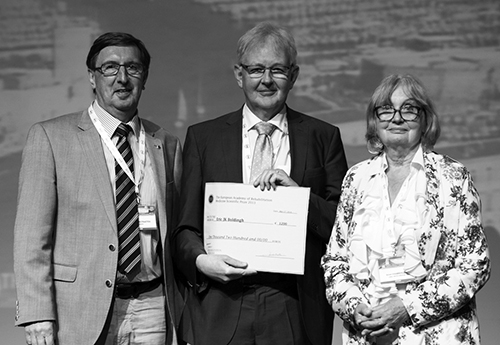
The following theses were considered to be of very high level and deserve to be shown even though they did not manage to reach the level of getting the award
The permanent and complex nature of cerebral palsy (CP) and the risk of developing secondary conditions imply that persons with CP will face health issues and participation restrictions throughout life.
The main aim of this thesis was to improve our insight into health issues and participation amongst adults with spastic CP, and to identify targets for prevention and treatment of both health problems and participation restrictions.
In two cross-sectional studies we studied 72 adults with spastic unilateral and bilateral CP (aged 25–45 years) without severe cognitive impairment. Health issues, e.g., chronic pain, fatigue and depressive symptoms, were assessed. Furthermore, aerobic fitness (progressive maximal exercise test), physical activity level (activity monitor) and cardiovascular disease (CVD) risk factors (e.g., non-fasting blood sample, blood pressure, body fat, and smoking) and clustered 10-year CVD risk (Systematic Coronary Risk Evaluation) were measured. In addition, participation and health-related quality of life (HRQoL) were assessed.
Compared to Dutch healthy reference samples, adults with bilateral CP had a significantly higher prevalence of chronic pain (75% vs 39%) and depressive symptoms (25% vs 12%) (p < 0.005), higher severity of fatigue (4.4 vs 2.9; p < 0.0001) (1), and reduced aerobic fitness and physical activity (mean 77% and 85% of ref. values, respectively).
The 10-year fatal CVD clustered risk was low (≤ 1%). However, several single CVD risk factors were present, e.g. higher blood pressure levels. A high risk waist circumference was found in about one-fifth of the study sample. Lipid profile, smoking and alcohol consumption were more favourable amongst adults with bilateral CP than in a reference sample (2).
Regarding participation, at least 60% of adults with bilateral CP had difficulty in mobility, recreation and housing, and 44% in personal care and employment. Adults with bilateral CP perceived a low HRQoL for physical functions, but not for mental functions (3).
In adults with unilateral CP, physical activity levels were normal and they had in most life areas a comparable level of participation as healthy age and gender matched persons. However, they spent more time on non-intensive leisure activities (4).
In conclusion, this study on relatively young adults with spastic CP without severe cognitive impairment, showed that persons with bilateral CP were severely affected by secondary conditions, in addition to their spastic paresis. A substantial number of them experienced participation restrictions. Relevant modifiable factors in bilateral CP seem aerobic fitness, body fat and self-efficacy. Adults with unilateral CP functioned relatively well, but were less extensively studied. These findings underscore the necessity for future research to disentangle underlying mechanisms of health issues and to refine targets for both prevention and treatment of adults with CP.
Wilma van der Slot works as a rehabilitation physician and researcher at the Department of Neurorehabilitation of Rijndam rehabilitation institute and within the research themes ‘Transition and Lifespan Research’ and ‘MoveFit’ of the Department of Rehabilitation Medicine, Erasmus MC, Rotterdam, The Netherlands. Her works involves neurorehabilitation, specialised rehabilitation care during the transition into adulthood and lifespan care for persons with a disabling condition since childhood. E-mail: w.vanderslot@erasmusmc.nl
References
van der Slot WMA, et al. Chronic pain, fatigue, and depressive symptoms in adults with spastic bilateral cerebral palsy. Dev Med Child Neurol 2012; 54: 836–842.
van der Slot WMA, et al. Cardiovascular disease risk in adults with spastic bilateral cerebral palsy. J Rehabil Med 2013; 45: 866–872.
van der Slot WMA, et al. Participation and health-related quality of life in adults with spastic bilateral cerebral palsy and the role of self-efficacy. J Rehabil Med 2010; 42: 528–535.
van der Slot WMA, et al. Everyday physical activity and community participation of adults with hemiplegic cerebral palsy. Dis Rehabil 2007; 29: 179–189.
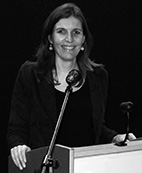
The Physical and Rehabilitation Medicine department and the gait lab are complementary. Evidence-based rehabilitation requires the development of reliable assessment tools and efficient rehabilitative procedures, whereas clinical practice contextualizes the observations made in the gait lab. Hence, the efficacy of the tibial nerve neurotomy and the interest of the long-range autocorrelations analysis were studied in a complementary way throughout the same PhD thesis.
The spastic equinovarus foot (SEF) is a common impairment that interferes with ambulation, limits achievement of daily activities and negatively affects participation and quality of life in hemiparetic patients. Selective neurotomy is an option of treatment when SEF results from overactivity of the calf muscles. This surgery consists of a partial and selective section of the motor nerve branches innervating the spastic muscles. Only several non-randomized, uncontrolled case-series studies had suggested that tibial nerve neurotomy was a safe and long-lasting treatment of SEF (1). Based on the International Classification of Functioning, Disability and Health, we performed a randomized, assessor-blinded, controlled trial comparing the tibial nerve neurotomy with botulinum toxin injections in the calf muscles (2). This study validated with a higher level of evidence the use of the tibial nerve neurotomy as a treatment of choice for chronic stroke patients presenting with SEF.
In the 2nd part of the project, we explored the long-range autocorrelations characterizing the stride duration variability in the normal human gait, using complex mathematical methods (3). Long-range autocorrelations are used to characterize the long-term dynamics of gait variability and are described as a marker of gait balance and fall risk. Their persistence and reproducibility while walking on a treadmill are a reality, which further validates the treadmill as a useful tool for assessing gait fluctuation dynamics (4). The hypothesis that they would be efficient for comparing subjects presenting with different spontaneous speed is supported by their invariance over a large range of gait speeds in different age groups (5). Finally, it was shown that their properties were not affected by biomechanical constraints or cognitive interferences as imposed through backward walking and dual-tasking (6). As a result, these findings suggest that the long-range autocorrelations observed in walking variability are robust and intrinsic to the locomotor system.
The duality between both parts of the thesis is merely theoretical. In reality, neuroscience improves the knowledge of the nervous system functioning, which is the basis for rational approaches to rehabilitation. In parallel, rehabilitation contextualizes the scientific progress and gives meaning to neuroscience. The common presentation of both projects in the same PhD thesis illustrates the interest of an integrated approach combining clinical and scientific activities. Hence, my professional occupation is presently focused on the clinical management of patients, but always with a scientific vision and in close collaboration with the gait lab.
Benjamin Bollens works as a rehabilitation physician and invited lecturer at the Université Catholique de Louvain, Institute of Neuroscience, Avenue Mounier and Université Catholique de Louvain, Cliniques universitaires Saint-Luc, Physical Medicine and Rehabilitation Department, Avenue Hippocrate, Brussels, Belgium. E-mail: benjamin.bollens@uclouvain.be
References
Bollens B, et al. Effects of selective tibial nerve neurotomy as a treatment for adults presenting with spastic equinovarus foot: a systematic review. J Rehabil Med 2011; 43: 277–282.
Bollens B, et al. Comparison of selective neurotomy and botulinum toxin injections as a treatment for spastic equinovarus foot: a randomized, assessor-blinded, controlled trial. Neurorehabil Neural Repair 2013; 27: 695–703.
Crevecoeur F, et al. Towards a “gold-standard” approach to address the presence of long-range auto-correlation in physiological time series. J Neurosci Methods 2010; 192: 163–172.
Bollens B, et al. Does human gait exhibit comparable and reproducible long-range autocorrelations on level ground and on treadmill? Gait Posture 2010; 32: 369–373.
Bollens B, et al. Effects of age and walking speed on long-range autocorrelations and fluctuation magnitude of stride duration. Neuroscience 2012; 210: 234–242.
Bollens B, et al. Variability of human gait: influence of backward walking and dual-tasking on the presence of long-range autocorrelations. Ann Biomed Eng 2014; 42: 742–750.
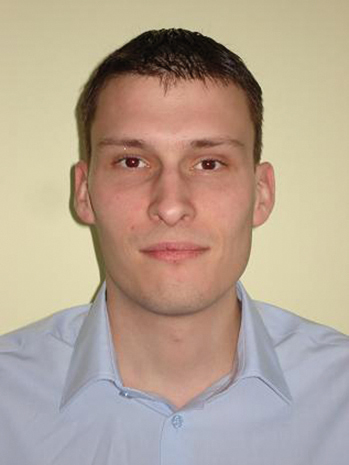
In this thesis findings of the Umbrella study (from start of active rehabilitation up to one year after discharge) and SPIQUE study (5 years after discharge), are presented. This thesis focuses on the impact of wheelchair exercise capacity, life satisfaction and their mutual relationships over time from the start of active rehabilitation up to 5 years after discharge of inpatient rehabilitation.
We found a marked decrease in life satisfaction of persons with spinal cord injury at one year after discharge from inpatient rehabilitation, compared to the general population and to their own life satisfaction before spinal cord injury.
Decrease of life satisfaction was strongest for the domains Sexual life, Self care and Vocational situation. Partner relations, Family life and Contacts with friends and acquaintances appeared the least affected life domains. Age, gender and education had little influence on life satisfaction after spinal cord injury or change of life satisfaction. High level of lesion, suffering from pain and from secondary impairments were associated with a decrease of life satisfaction and with low life satisfaction one year after discharge.
Life satisfaction improved during inpatient rehabilitation, especially during the first 3 months of active rehabilitation and remained stable during the first year after discharge. Having few pain sensations and a low number of other secondary impairments and having a better functional status were predictors of a more favourable course of life satisfaction early after spinal cord injury.
No significant changes in mean wheelchair exercise capacity were found between discharge and 5 years later. No significant determinants for the course of wheelchair exercise capacity in the 1–5 year interval were detected. Again age, gender, level and completeness of lesion were determinants for peak oxygen uptake and level of lesion and gender for peak power output, a confirmation of other international studies. The loss to follow-up group was older of age and included more persons with tetraplegia, probably leading to a slight overestimation of the model outcome for wheelchair exercise capacity.
We confirmed that different wheelchair exercise capacity trajectories exist after spinal cord injury. We found 4 different trajectories in the course of peak power output: 1) high progressive scores; 2) deteriorating scores: progressive scores during inpatient rehabilitation with deteriorating figures after discharge; 3) low progressive scores: low scores at start of rehabilitation with relative strong progressive scores after discharge; and 4) low inpatient scores with very strong progressive scores after discharge. Logistic regression of factors that might be distinctive between the trajectories with high progressive scores and low progressive scores, revealed that older age, female gender, tetraplegic lesion and low functional status were associated with the class with low progressive scores.
We examined that wheelchair exercise capacity and life satisfaction in spinal cord injury population are longitudinally associated up to 5 years after discharge of inpatient rehabilitation. Further analyses revealed that the relationship between exercise capacity and life satisfaction was mainly based on the within-subject variance, suggesting that improvement of physical fitness might lead to improvement of life satisfaction.
Casper Floris van Koppenhagen works as a Physical Medicine and Rehabilitation Specialist at a Spinal Cord Injury Unit, Rehabilitation Centre De Hoogstraat, Utrecht, The Netherlands. E-mail: casper.koppenhagen@planet.nl
